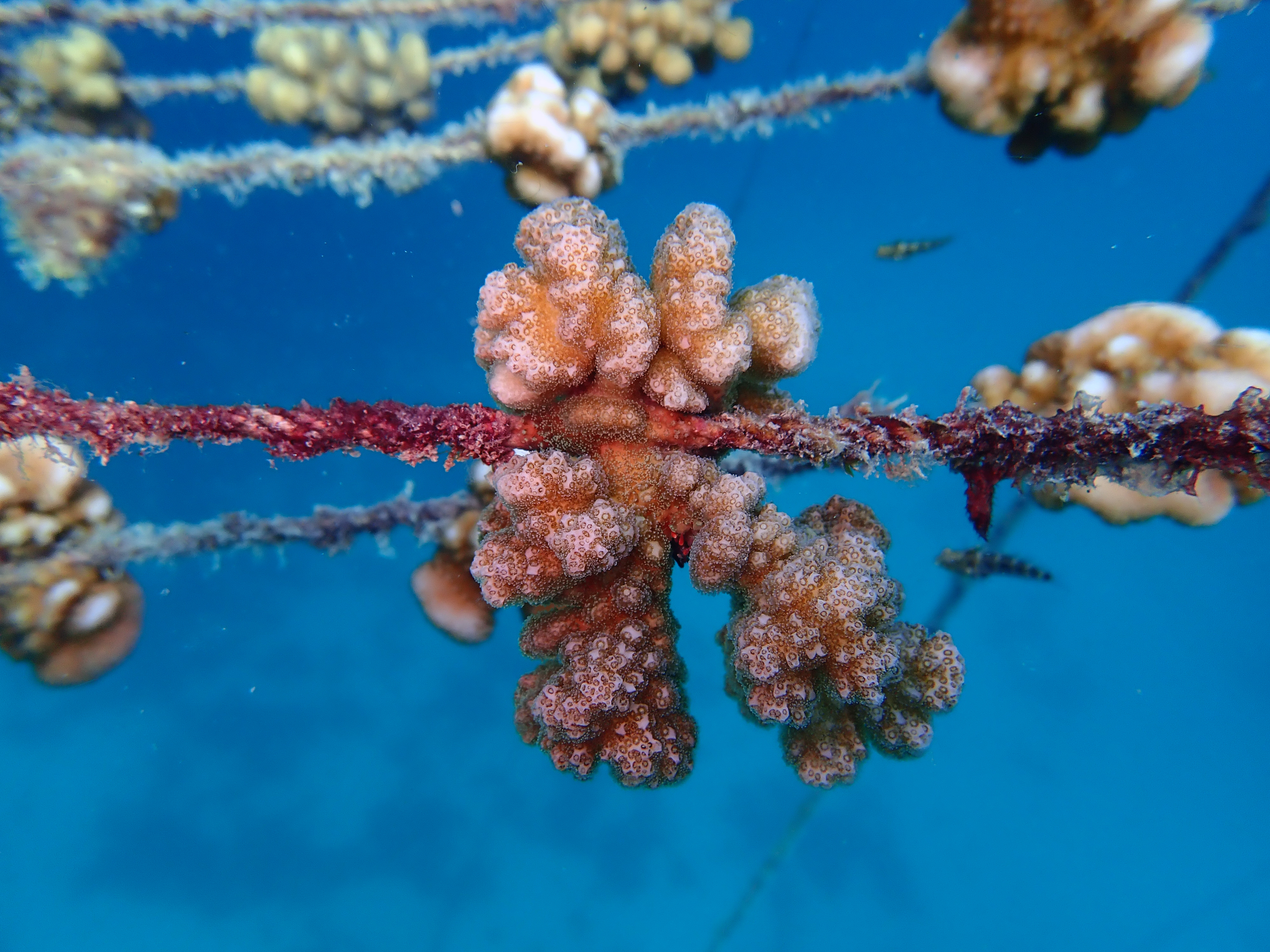Promoting Coral restoration through Science and Innovation
(Re) imagining a World of Beautiful Corals in Seychelles
May 23, 2024

If you are impressed now….
The coral reefs in Seychelles remain amongst the most beautiful in the world. As a Seychelles marine park ranger twenty years ago, I took my first dive and discovered the mesmerizing world beneath the ocean waves. The vibrant marine life left me in awe, and I was hooked—this was the career path I wanted to pursue. Life below water is vast, and I was eager to learn and explore all it had to offer. As a visitors’ guide, I was also excited to share my newfound passion for marine life. And so, I was surprised when a seasoned boat operator, amused by my eagerness, remarked, "If you are impressed now, you should have seen how it was just two years ago!" Puzzled by his comment, I had yet to fully grasp the impact of the then recent global bleaching event in 1998.
Over the next two decades, I have found myself echoing the same words "If you are impressed now, you should have seen how it was before!”
The Tipping point?
Imagine a world where the vibrant coral reefs vanish. They are the lifeblood of Small Island Developing States (SIDS), providing essential services such as food security, shoreline protection and contributing significantly to local economies through tourism and artisanal fishing. But, according to the National Oceanic and Atmospheric Administration, the fourth global bleaching event in 20 years is happening now, and Seychelles has not been left untouched.
Early this year, the outer islands reported the first signs of bleaching and by April 2024, the bleaching had already spread to the inner islands. Once colourful and vibrant, reefs are turning ghostly white due to changes in temperature, light, or nutrients, causing them to expel the symbiotic algae (zooxanthellae) that live in their tissues. These algae are the primary nutrient source for corals through photosynthesis, much like leaves on trees. Without these algae, corals lose their colour, starve, and die.
However, if conditions improve, corals can reabsorb these algae and recover. The UNDP-Adaptation Fund Coral Restoration Project (CRR) is working in the Seychelles with the Government, the Parks and Garden Authority (SPGA), the Marine Conservation Society of Seychelles (MCSS), and Nature Seychelles (NS) and civil society to restore coral reefs by nursing and transplanting corals. So far in the Seychelles, over 24,000 coral fragments have been cultivated and over 0.54 hectares of reef restored using ~13,000 nursery-grown corals. It is, therefore, heartbreaking to see the current bleaching event put these efforts under siege.


Using Science and Innovation to Save Corals
The Coral Restoration project is also designed to identify the best sites for coral restoration and the most resilient species. Initiatives like "seascape genomics" use oceanographic data, genomic analyses and map heat-tolerant coral populations to identify the adaptive potential of corals across the region and to facilitate targeted conservation strategies. Local scientists are to be trained to replicate these analyses to ensure its long-term sustainability.
The Coral Restoration project also supports land-based nurseries to enable coral propagation through scientific techniques like micro-fragmentation and fusion. After a bleaching event, it should be easier to find the most resilient species by using these techniques to ensure the most efficient harvesting and growing out a new generation of corals.
The project partners are also focusing on reducing stressful activities on corals, by relocating nurseries to deeper waters, constructing shading systems, and conducting marine surveys to monitor and identify resilient coral species. These actions are essential in mitigating the impacts of bleaching and promoting coral recovery.
Going forward, the project aims to expand its impact by restoring more coral reef areas across Seychelles, Mauritius and Rodrigues and sharing successful strategies across the subregion.
Protecting coral reefs is a shared global responsibility. Everyone can contribute to this effort. Whether it is supporting conservation organizations, participating in local initiatives, or spreading awareness about the importance of coral reefs, every action counts. Together, we can help ensure these vibrant ecosystems not only survive but flourish and (re)imagine a world of beautiful corals in Seychelles.

 Locations
Locations